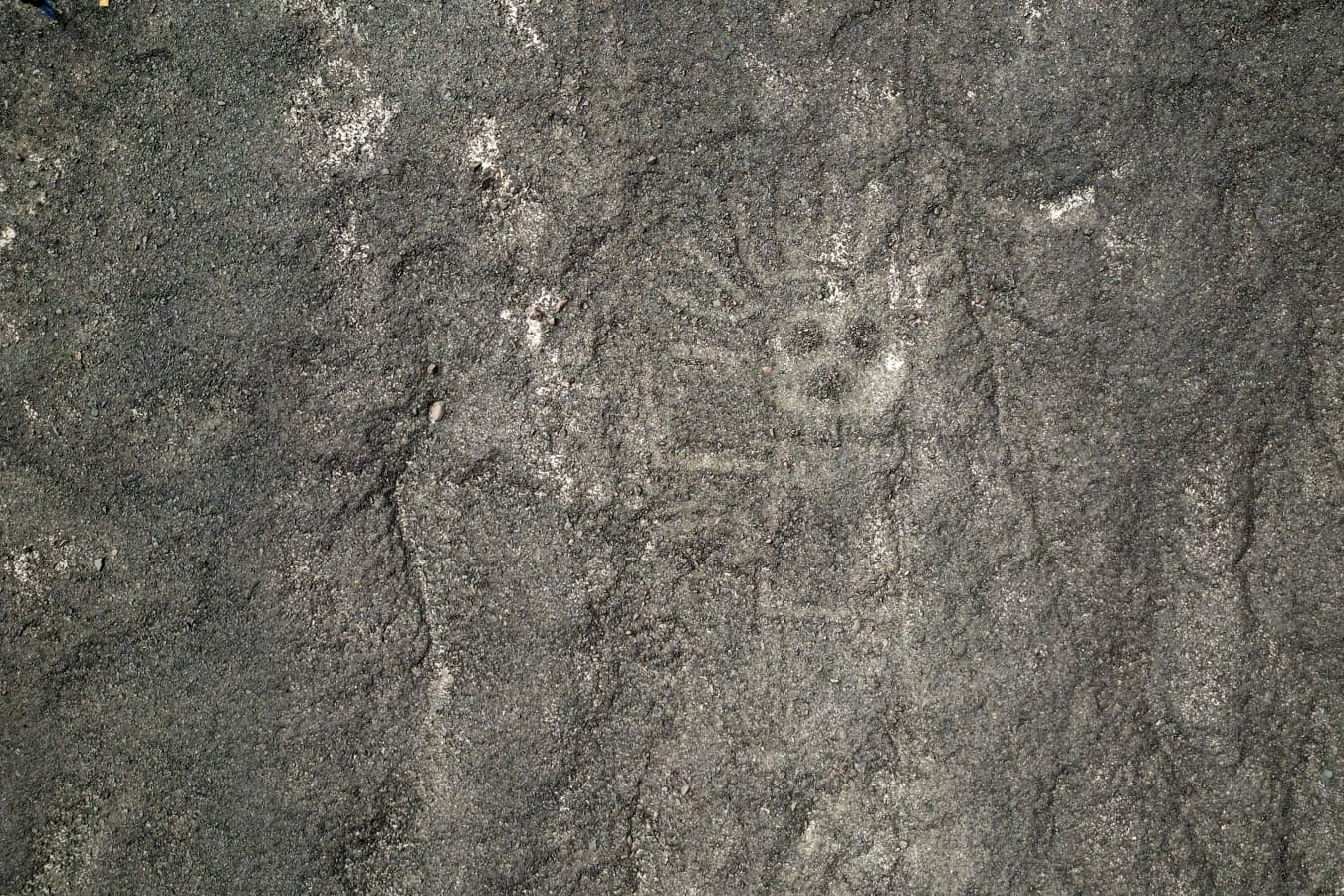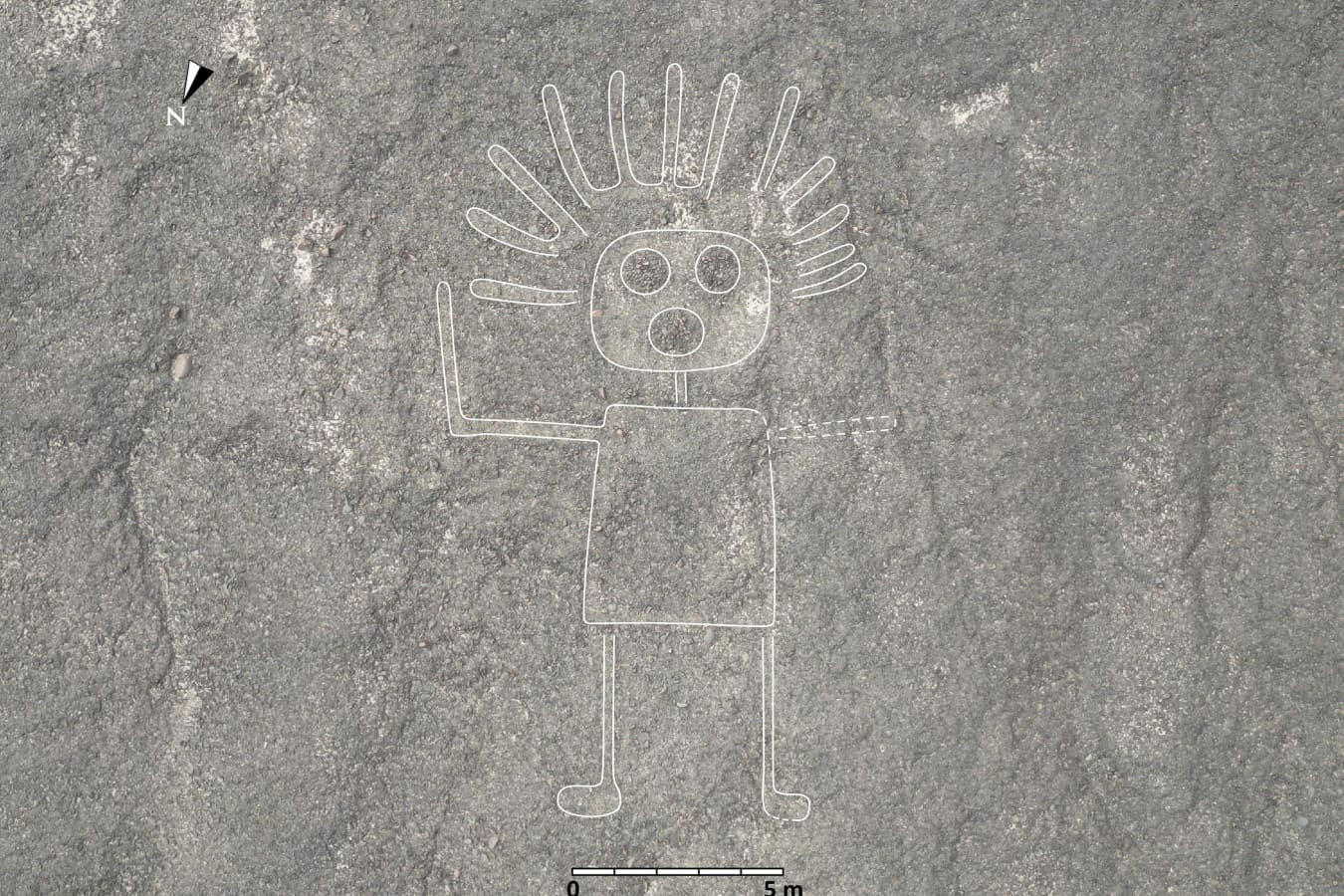Nazca lines
Language Log 2024-11-06
For basic facts, see below.
Thanks to AI and our Japanese colleagues, the study of Peru's mysterious Nazca lines has made a quantum leap forward.
AI Revealed a New Trove of Massive Ancient Symbols The 2,000-year-old geoglyphs offer clues to ancient Nazca people and their rituals By Aylin Woodward, Science Shorts, WSJ (Nov. 6, 2024)
Anthropologists have spent decades documenting a mysterious collection of symbols etched into the Peruvian desert, depicting everything from human decapitation and domesticated animals to knife-wielding orcas.
In the past century or so, 430 of these geoglyphs have been found. Now, an analysis using artificial intelligence has nearly doubled the number in just six months.
Constructed primarily by ancient South American people known as the Nazca millennia ago, the geoglyphs, which can be as long as a football field, are concentrated on a roughly 150-mile-square area called the Nazca Pampa. The Nazca people created the geoglyphs in an area unsuitable for farming, removing the black stones that pepper the desert to reveal a layer of white sand beneath. The contrast between tones yielded the geoglyphs.
Much of their mystery lies in how challenging it is to spot them.
“These geoglyphs have been around for at least 2,000 years, during which time dust has accumulated on the white lines and areas, causing their colors to fade,” said Masato Sakai, a professor of anthropology at Yamagata University in Japan and lead author of a study published in the journal Proceedings of the National Academy of Sciences detailing the new discoveries.
The symbols fall into two categories. Larger figurative geoglyphs, known as the Nazca Lines, average about 300 feet in length, Sakai said, while smaller ones, akin to marble reliefs, average just 30 feet.

 A humanoid geoglyph and its rendering in the Nazca Desert. The Yamagata University Institute of Nasca.
A humanoid geoglyph and its rendering in the Nazca Desert. The Yamagata University Institute of Nasca.
The larger, line-type geoglyphs primarily depict wild animals, while a majority of the smaller, relief-type ones feature humanlike figures, human heads and livestock such as llamas—themes that don’t appear in the line-type geoglyphs at all. Identifying more of the relief-type geoglyphs is critical to understanding the symbolic difference between the two.
Sakai and his research team, with help from IBM Research, trained and used an artificial-intelligence model to spot new geoglyphs from high-resolution aerial photographs taken in 2015.
AI helped identify 1,300 or so promising new etchings, all of the smaller relief-type. A field survey of some of those in 2022 confirmed 303 geoglyphs. The remainder are still under investigation.
Many of the newly identified geoglyphs were found within viewing distance of ancient trails that crisscross the Nazca Pampa, according to the study authors, making a compelling case that the symbols were meant to share information with individuals or small groups who walked along the trails.
By contrast, the larger geoglyphs functioned as enormous wild-animal shaped plazas for communal rituals, according to Sakai. Research reveals they are located at the starting and ending points of pilgrimage routes to sacred sites and temples.
“I believe that their shapes were intended to harness the power of wildlife for ritual activities,” Sakai said.
What do you think the lines radiating from the head of the humanoid figure (pictured in the WSJ article above) are meant to represent—the rays of the sun? A feathered headdress? For many more examples and details of the AI applications and the overall research project, see the The Japan Times articles cited in "Selected readings". Search also under — nazca lines asahi shimbun — for additional articles with photographs and documentation.
Basic facts
The Nazca Lines in southern Peru are a group of pre-Columbian geoglyphs etched into desert sands. Covering an area of nearly 1,000 sq. kilometers, there are about 300 different figures, including animals and plants. Composed of over 10,000 lines, some of which measure 30 meters wide and stretch more than 9 kilometers, the figures are most visible from the air or nearby hilltops. ― Google
Address: Peru
Coordinates: 14°41′51″S 75°8′6″W / 14.69750°S 75.13500°W
UNESCO Site Id: 700
Inscription: 1994 (18th Session)
Selected readings
- "Nazca lines" — Wikipedia
- "The Japanese researcher uncovering the mystery of Peru’s Nazca Lines", by Alex K.T. Martin, The Japan Times (10/21/24)
- "AI research uncovers 300 ancient etchings in Peru's Nazca desert", AFP-JiJi, JiJi (9/25/24)
[Thanks to Mark Metcalf and June Teufel Dreyer]